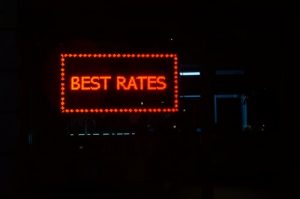Not all FHA mortgage lenders are created equal. Here’s how to find the best FHA lender for you and your particular situation.
Finding the best FHA mortgage lender is not easy. First, you should limit the field to lenders who have been approved by the Federal Housing Administration. Not all lenders offer them. Next, you need to decide what your ideal FHA lender should bring.
How to Find the Best FHA Mortgage Lender
With the help of these five tips to find the best FHA mortgage lender for your situation. Learn more about each tip here.
Know your credit score. For a deposit of only 3.5%, you need a score of at least 580.
Buy more than one FHA lender. Each mortgage provider has different interest rates and services that you want to compare.
Calculate the prices. FHA mortgage insurance is required, but the lender’s fees may be negotiable.
Find the APR. Compare the annual percentage of each lender, not just the interest rate, to choose the best deal.
Find the right FHA lender for your situation. Decide which features and benefits are important to you and don’t decide until you find them.
How to Find an FHA Mortgage Lender
The details, interest rates, and eligible loan conditions vary from one lender to another. How to find the best FHA mortgage lender?
1. Know your credit score.
2. Buy more than one FHA lender.
You want to do this not only because one lender can be more forgiving in qualifying one borrower than another, but also because FHA mortgage rates can be anywhere.
Lenders assess their loans based on current market conditions and mark their interest rates based on operating costs and profit targets. It’s like buying gas: a station can cost a lot more than a station down the street.
3. Know the difference between FHA mortgage insurance premiums and lender rates.
Loans guaranteed by the FHA require mortgage insurance to cover default costs. The premiums for FHA mortgage insurance are uniform. You pay the same premiums at Bank A as you do at Credit Union B. Lender rates are not the same from one lender to another.
You will receive an official quote for the loan within three days of applying for the mortgage. It is a standard government-mandated form that you can get from any lender. This makes it easy to compare the terms and prices offered by each lender.
On the second page of the loan estimate, search for “Details of Transaction Costs”. Here you can find the total rates of individual lenders.
In this example, the first fees are labeled “0.25% of the loan amount (points)”. These are reduction points, which are just one option that you can use or leave to reduce the interest rate on your loan. The “registration fees” and “subscription fees” are the costs of the lender. You can see all kinds of rates with all kinds of names here.
Aside from the discount points, the lender’s fees are not a good thing and must be negotiated. An FHA mortgage insurance premium is listed in section B, “Services you cannot purchase” or in the “Other costs” column.
The current mortgage insurance premiums included in your monthly payment can be found on the last page of the credit estimate under “Estimated Payments”.
4. Find the APR.
Another way to check how much you pay in commissions is to directly compare the annual percentages between lenders. Your payment rate, the interest rate on which your monthly payment is based.



